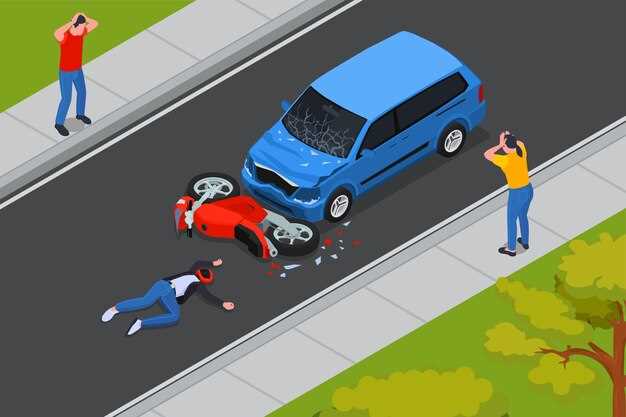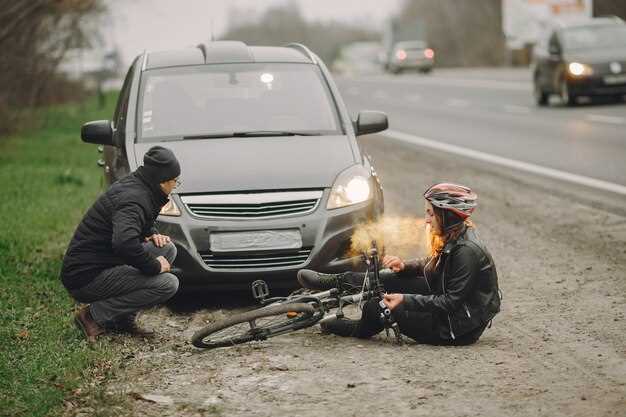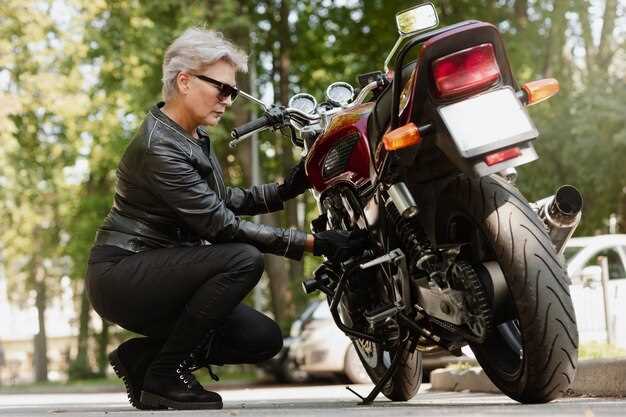

Motorcycle riding offers a unique blend of freedom and excitement, but it also comes with inherent risks. Understanding how to avoid common motorcycle crashes is crucial for any rider aiming to enhance safety on the road. By employing specific strategies and adopting best practices, motorcyclists can significantly decrease their chances of encountering dangerous situations.
One of the most effective ways to prevent accidents is to always stay aware of your surroundings. This includes keeping an eye on other vehicles, pedestrians, and road conditions. Situational awareness can help detect hazards before they become imminent threats, allowing for timely responses that could save lives. Additionally, ensuring that your motorcycle is in top condition through regular maintenance is essential for safe riding.
Furthermore, understanding common accident scenarios can arm riders with the knowledge needed to avoid them. Many crashes occur at intersections or from rear-end collisions. By implementing strategies such as defensive riding techniques and anticipating the actions of others, riders can navigate these tricky situations more effectively. Mastering these skills will not only enhance personal safety but also contribute to a safer riding environment for everyone on the road.
Avoiding Common Motorcycle Crashes: Tips and Strategies

Motorcycle riding offers a sense of freedom and adventure, but it also comes with certain risks. To enhance your safety on the road, understanding how to avoid common motorcycle crashes is essential. Here are effective tips and strategies to help you stay safe.
1. Stay Visible – Ensure that you are always seen by other drivers. Wear bright, reflective gear and utilize your motorcycle’s headlights, even during the day. Position your bike in a way that increases your visibility, especially at intersections and in traffic.
2. Maintain a Safe Following Distance – Keep a safe distance from the vehicle in front of you. This allows ample time to react to sudden stops or emergencies. A good rule of thumb is to maintain at least three seconds of distance in front of you under normal conditions.
3. Be Aware of Your Surroundings – Constantly scan the road for potential hazards, such as potholes, debris, or other vehicles. Anticipate actions of drivers, particularly at intersections where most accidents occur. Situational awareness significantly reduces risks.
4. Use the Right Gear – Always wear appropriate protective gear, including a full-face helmet, gloves, jackets, and boots. This equipment is designed to minimize injuries in case of an accident and enhance your comfort while riding.
5. Practice Defensive Riding – Adopt a defensive riding strategy. Assume that other drivers may not see you or may not check their mirrors before changing lanes. Be prepared to react to unexpected moves by surrounding vehicles.
6. Avoid Distractions – Stay focused on the road and avoid distractions such as using your phone or adjusting your music while riding. Distractions can significantly impair your reaction times and awareness.
7. Know Your Motorcycle – Understand the specific characteristics of your bike, including its braking capabilities and handling. Practice riding in different conditions to build confidence and skills that will help you react effectively in emergencies.
8. Take a Safety Course – Enroll in a motorcycle safety course to improve your riding skills and learn techniques to avoid crashes. These courses often provide valuable insights into defensive riding and risk management.
9. Ride Sober – Never ride under the influence of alcohol or drugs, as they greatly impair your judgment and reaction times. Always prioritize sobriety for your safety and the safety of others on the road.
10. Regularly Maintain Your Motorcycle – Perform regular maintenance checks on your motorcycle to ensure that brakes, tires, lights, and other critical components are in good working condition. A well-maintained bike is less likely to experience mechanical failures that could lead to accidents.
By implementing these tips and strategies, you can significantly reduce the risk of being involved in a motorcycle crash. Safety should always be your top priority while enjoying the ride.
Understanding Blind Spots and How to Navigate Them
Blind spots are areas around a vehicle that cannot be directly observed by the rider while looking in the mirrors. For motorcyclists, awareness of blind spots is crucial as these zones can lead to dangerous situations when other drivers fail to see them. Cars, trucks, and SUVs create larger blind spots, particularly alongside and behind them, where they may not detect a motorcycle.
The first step in navigating blind spots is to recognize where they typically exist. Larger vehicles have substantial blind spots on their right side and directly behind them. Motorcyclists should avoid riding too close to these vehicles. Maintaining a safe distance can provide greater visibility and reduce the likelihood of an accident.
When approaching intersections or merging onto highways, it is essential for riders to increase their awareness. Always scan the surroundings and pay attention to the behavior of nearby vehicles. If you suspect a vehicle may change lanes or turn, be ready to adjust your position or speed accordingly.
Using lane positioning can also aid in mitigating blind spot risks. Riders should position themselves slightly to the left or right within their lane, allowing them to be more visible to drivers. This positioning can also reduce the chances of getting caught in a vehicle’s blind spot.
Utilizing reflective gear and proper lighting on the motorcycle can enhance visibility for other drivers. Bright clothing and properly functioning lights make it easier for others to spot you, particularly in low-light conditions or adverse weather.
Lastly, always check mirrors and perform head checks before changing lanes or merging. Even with proper mirror adjustments, physically looking over your shoulder can reveal vehicles in your blind spots that the mirrors might miss. Combining mirror use with head checks provides a comprehensive visual assessment of your surroundings.
Mastering Emergency Braking Techniques for Riders

Emergency braking is a crucial skill that every motorcycle rider should master. In unexpected situations, effective braking can mean the difference between a near-miss and a crash. Here are techniques to improve your emergency braking proficiency:
-
Know Your Bike: Understand the braking capabilities of your motorcycle. Different models have varying brake systems (disc vs. drum brakes) and characteristics. Familiarize yourself with the feel and responsiveness of the controls.
-
Use Both Brakes: Apply both front and rear brakes simultaneously during emergency stops to distribute weight and enhance stability. The front brake provides the majority of stopping power, while the rear helps control the bike’s trajectory.
-
Progressive Application: Avoid grabbing the brakes suddenly. Instead, apply them gradually to prevent skidding. Start with a Firm squeeze on the front brake, followed by a moderate application of the rear brake.
-
Lower Your Center of Gravity: Shift your body weight forward and down while braking. This technique helps maintain stability and prevents the rear wheel from lifting.
-
Look Ahead: When you identify a potential emergency, keep your eyes focused on a safe escape route. This helps you remain calm and react effectively rather than fixating on the object you are trying to avoid.
In addition to these core techniques, consider the following strategies for improving your emergency braking:
-
Practice in Safe Conditions: Find a wide-open area, like an empty parking lot, to practice your emergency braking. Experiment with varying speeds and brake pressures to understand how your bike responds.
-
Incorporate Maneuvers: Combine braking with swerving exercises. This will help you understand how to control the bike during emergency stops while changing direction.
-
Maintain Tires and Brakes: Regularly check your tire pressure and tread depth, as well as the condition of your brake pads. Worn tires or brakes can significantly hinder stopping performance.
-
Wear Proper Gear: Equip yourself with appropriate protective gear. This includes a helmet, jacket, gloves, and boots, which can provide necessary protection during an emergency situation.
-
Stay Calm: In emergency scenarios, panic can lead to poor decision-making. Practice breathing techniques to stay relaxed and focused under pressure.
Mastering emergency braking techniques not only reduces the risk of crashes but also enhances your overall riding confidence. Regular practice and understanding your motorcycle’s dynamics are essential for effective emergency responses.
Utilizing Proper Riding Gear for Increased Safety
Wearing appropriate riding gear is essential for motorcyclists aiming to enhance their safety on the road. Proper gear not only protects against injuries in the event of an accident but also improves overall riding comfort and awareness.
First and foremost, a high-quality helmet is non-negotiable. It should meet established safety standards, such as DOT, ECE, or Snell certifications. A well-fitted helmet reduces the risk of head injuries significantly, providing vital protection in case of collisions or falls.
Next, protective clothing made from durable materials like leather or specialized textile fabrics is crucial. Jackets and pants designed specifically for riding incorporate reinforced seams and padding in key impact zones like shoulders, elbows, and knees. These features absorb shock and minimize abrasion injuries should an accident occur.
Additionally, wearing gloves made for motorcycling improves grip and control of the bike while also protecting hands from road rash and cold weather. They should provide adequate dexterity without compromising safety. Look for gloves with knuckle protection and secure closure systems.
Footwear is another important consideration. Sturdy, ankle-high boots made for motorcycling not only protect feet and ankles but also offer better grip on the pedals and provide support during a ride. Avoid wearing casual shoes, as they do not provide the necessary protection.
Finally, reflective or bright-colored gear significantly enhances visibility, especially during low-light conditions. Utilizing gear with reflective strips or high-visibility colors can make a substantial difference in being seen by other road users.
In summary, the right riding gear is a critical investment for safety on the motorcycle. It saves lives, reduces the severity of injuries, and improves riding experience. Prioritize quality and fit when selecting your gear to ensure maximum protection as you ride.





